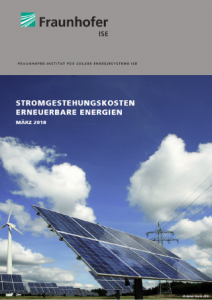- Over EUR 28 billion for "climate protection measures": KfW is one of the most important supporters of the Paris climate goals
- Promotional bank is a global pioneer with its standardised SDG mapping
- Strong international interest in KfW SDG mapping
 KfW is today publishing the results of the SDG mapping of new commitments throughout the Group in 2019. In order to clarify the individual contribution made by KfW's new commitments to achieving the UN Sustainable Development Goals, KfW has developed a standardised procedure: 1,500 indicators are used each year to determine to which SDGs KfW's new commitments can be assigned. This makes the contribution transparent at both group and business sector level.
KfW is today publishing the results of the SDG mapping of new commitments throughout the Group in 2019. In order to clarify the individual contribution made by KfW's new commitments to achieving the UN Sustainable Development Goals, KfW has developed a standardised procedure: 1,500 indicators are used each year to determine to which SDGs KfW's new commitments can be assigned. This makes the contribution transparent at both group and business sector level.
The mapping of individual new commitments from 2019 to the Sustainable Development Goals shows the following funding priorities:
- SDG 11: Sustainable Cities and Communities (approx. EUR 29.0 billion)
- SDG 13: Climate action (around EUR 28.2 billion)
- SDG 8: Decent work and economic growth (approx. EUR 28.1 billion)
- SDG 7: Affordable and clean energy (approx. EUR 26.4 billion)
"With more than EUR 28 billion for 'climate action', we are one of the most important supporters of the Paris climate goals worldwide," explains Dr Günther Bräunig, Chairman of the Executive Board and Chief Sustainability Officer of KfW Bankengruppe. "The fact that we are also making substantial contributions to all other 16 SDGs at the same time shows how we combine the environmental with the economic and social dimensions of sustainability as part of our broad legal mandate."
The financial sector can and must make significant contributions to the efforts to achieve greater climate protection and sustainability. As a transformative promotional bank, KfW is assuming particular responsibility in this regard and already launched the "KfW Roadmap Sustainable Finance" project in summer 2018, the aim of which is to develop a stringent and multidimensional sustainability concept for the bank. One of the first results is the group-wide SDG mapping, which makes KfW's contributions to the Sustainable Development Goals (SDGs) transparent. With this volume-based and largely automated mapping approach, KfW is one of the pioneers worldwide in terms of recording and publishing SDG financing targets.
Since the initial publication of the SDG mapping of KfW's 2018 new commitments in September 2019, international interest in KfW's SDG mapping has been high. Many partners are currently planning similar publications and would therefore like to learn more about KfW's own mapping methodology. An exchange to this effect has now taken place with several European promotional banks and multilateral organisations, among others.
Detailed information on KfW SDG mapping:
www.kfw.de/sdgs
Source: KfW-PM dated 9.3.2020
Keywords:
DE-News, Renewable, Funding, Climate protection, Sustainable management, New books and studies, Quarters, SDG 2030, Settlements, City, Economics





